
Do Vibration Platforms Help Varicose Veins? The answer is yes.
Whole Body Vibration (WBV) can support varicose vein-related issues by boosting skin and leg blood flow while also supporting lymphatic system movement.
The uptick in overall circulation after using WBV will make your legs feel lighter and less swollen.
You’re also less likely to have night cramps while sleeping.
However,
Vibration Therapy may not repair faulty vein valves, and it should not be considered a replacement for medical treatment for varicose veins or chronic venous insufficiency; those conditions require assessment and care from a vein specialist.
While your primary plan should be receiving a proper diagnosis (e.g., duplex ultrasound) and appropriate medical vein care, WBV can be a useful add-on for comfort and circulation.
Varicose veins are enlarged, twisted veins you can see under the skin that most often appear in the legs.
Varicose veins develop when the one-way valves in leg veins fail or don’t close properly (venous reflux), allowing blood to fall backward and pool.
Because leg veins work against gravity and depend on the calf-muscle pump to move blood upward, this backward flow raises pressure, stretches the vein walls, and leads to the bulging, twisted appearance of varicose veins.
Varicose vein symptoms range from cosmetic concerns and day-to-day discomfort to severe medical conditions.
Here’s what people commonly notice—and how those symptoms typically behave.
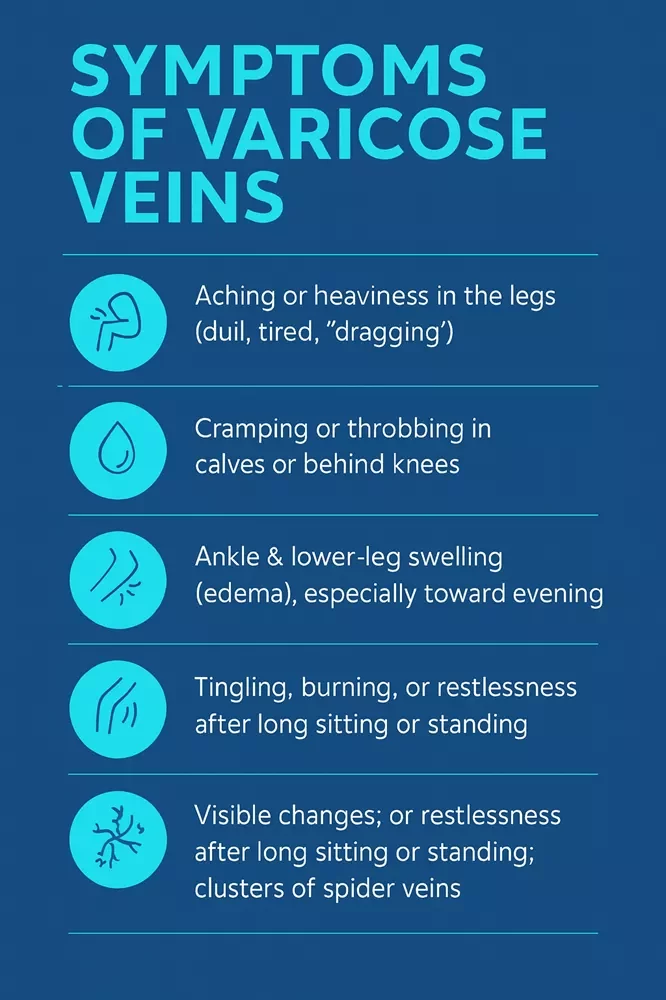
Infographic listing symptoms of varicose veins
Risk rises with family history, age, pregnancy, obesity/overweight, and jobs that require prolonged standing.
Hormones and multiple pregnancies can also add load to leg veins.
This involves regular walking/leg exercises, weight management, avoiding long periods of standing/sitting, elevating the legs, and compression stockings to reduce pooling and swelling.
There are minimally invasive options such as sclerotherapy, endovenous ablation, or surgical approaches to treat the underlying reflux when symptoms persist or complications arise.
Whole Body Vibration (WBV) triggers automatic contractions throughout the muscles in the legs.
Those muscle contractions work like a pump for the veins and lymph vessels, pushing fluid upward toward the heart and lymph nodes—similar to what happens during walking.
This is why WBV sessions often leave legs feeling warmer or less tight.
In patients with lipedema, adding low-frequency vibrotherapy to standard manual lymphatic drainage (MLD) improved outcomes versus MLD alone—supporting the idea that vibration can augment fluid clearance strategies.
The resistance that Whole Body Vibration (WBV) creates is based on the platform’s ability to simulate higher levels of gravity on your body.
Since your circulatory and lymphatic systems work according to the need to overcome Earth’s gravity, this becomes a highly specific way to optimize their function and support your blood vessels and veins.
Vibration acutely increases skin and peripheral blood flow, likely via shear stress–mediated vasodilation pathways (e.g., nitric oxide–related), which improves local perfusion.
Vibration acutely increases skin and peripheral blood flow, likely via shear stress–mediated vasodilation pathways (e.g., nitric oxide–related), which improves local perfusion.
Skin blood flow: In healthy adults, a brief bout of WBV significantly increases skin blood flow, with some studies reporting roughly twofold rises that persist for several minutes after stepping off the plate.
Leg-artery blood-flow metrics (over weeks): In a randomized program for people with type 2 diabetes, 12 weeks of WBV improved femoral-artery blood-flow variables (e.g., mean/diastolic velocities) and reduced adiposity versus controls—evidence that regular WBV can favorably shift lower-limb hemodynamics.
Dosage: Blood-flow responses vary with frequency and amplitude (e.g., 5–30 Hz, 2.5–4.5 mm); studies show leg blood flow rises during 1-minute squats on WBV compared with non-vibration conditions.
By boosting circulation, WBV can ease heaviness, cramps, and mild swelling—common complaints with varicose veins.
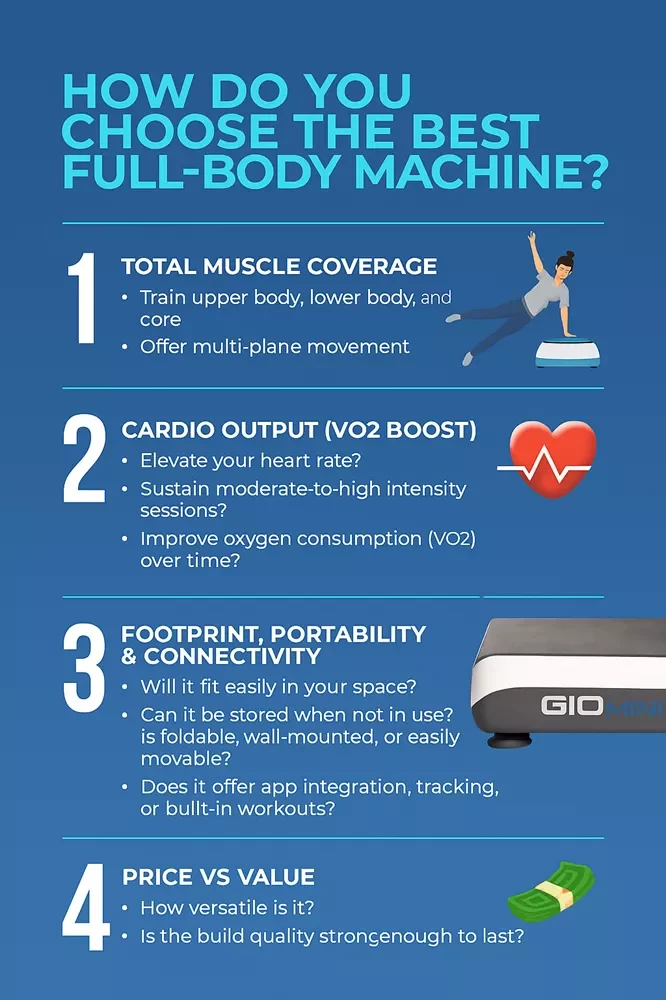
Infographic showing four benefits of vibration therapy for varicose and spider veins
The main limitation is that WBV is not a cure.
Vibration Therapy does not repair faulty vein valves (the root cause of venous reflux).
Lasting relief usually requires medical evaluation and, when indicated, vein-directed treatments (e.g., ablation, sclerotherapy).
Benefits require consistent therapy to be effective.
WBV should complement medical care.
If you have persistent swelling, visible bulging veins, skin changes, or pain, see a vein specialist (duplex ultrasound can confirm reflux).
Vibration Therapy is safe for everyone unless contraindicated.
Here are some contraindicated conditions that require medical consultation before attempting Vibration Therapy:
If any of these sound familiar, check in with your doctor before using the machine.
When circulation, swelling, or vein comfort are your priorities, you want a platform that’s precise and adjustable—not just “powerful.”
Use this quick guide to choose confidently and dial in safer settings.
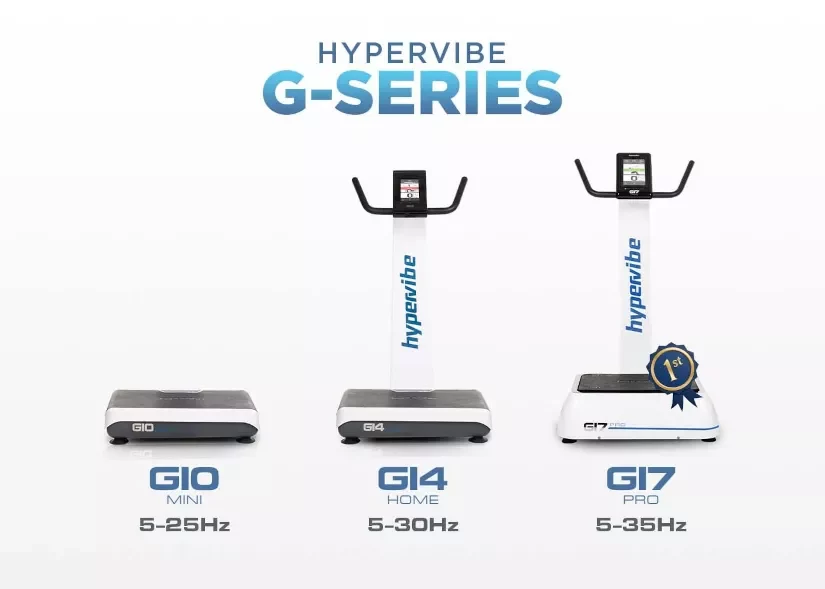
Hypervibe Vibration Platforms
Many tolerate moderate ranges (15–25 Hz) well for short bouts (e.g., 30–60 s with equal rest).
Scale up only if symptoms remain comfortable.
Pro Tip: Change one variable at a time (frequency or duration or amplitude). If itching, heaviness, or swelling worsens, contact your medical provider.
When choosing a Vibration Platform pay attention to the following:
Below are simple programs you can tailor at home.
They’re written for comfort-first users and align with vein-health guidance on light, progressive loading.
Always pause and consult a clinician if symptoms worsen.
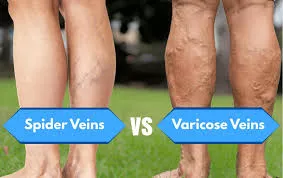
image of legs with varicose veins and spider veins
Settings & Stance
Session Structure (10–12 minutes total)
Extras
Settings & Stance
Session Structure (8–10 minutes total)
Settings & Stance
Stance Progression
Session Structure (5–10 minutes on-time)
Integration With Cardio & Strength
Yes,
Vibration boosts skin and leg blood flow and supports lymph movement.
Many people report legs feeling lighter with less mild swelling right after sessions.
They don’t erase spider veins or repair vein valves, so consider them a comfort add-on alongside walking, elevation, and (if prescribed) compression.
Start with 3–4 short sessions/week on non-consecutive days.
Use low frequency (5–15 Hz), low amplitude when starting out, and 60-second bouts with equal rest (walk or do ankle pumps during rests).
Track evening ankle size, leg heaviness (0–10), and itching; progress only when those markers stay stable or improve for 2 weeks.
Choose a model with precise low-frequency control (10–30 Hz), fine increments, and stable handrails.
All Hypervibe models are designed for therapeutic use.
If you’re unsure which model fits your space and needs, our team can help you match specs to your goals.
When used correctly, Whole Body Vibration (WBV) typically eases symptoms.
However, if you have significant swelling, skin changes, or pain, or a history/risk of DVT/PE, get medical clearance first.
Stop if symptoms worsen during or after sessions.
Each helps in a different way:
Best results often come from combining compression (if advised), daily walking, and short WBV sessions.
Avoid WBV—or get clearance—if you’re pregnant, immediately post-procedure, or have active/recent DVT/PE, severe cardiovascular disease, or uncontrolled hypertension.
Red flags include new/worsening pain or swelling, warmth/redness, a tender cord-like vein, skin discoloration/ulcer, or sudden shortness of breath/chest pain (emergency).
If any occur, stop and seek medical care.
Yes—short bouts of WBV can significantly increase skin and peripheral blood flow.
Some programs also show improved lower-limb hemodynamics over time.
They’re complementary:
Yes.
We recommend starting with our Beginner Vein-Comfort Routine:
4 × 60 s on / 60 s off at 12–15 Hz, low amplitude, standing, soft knees; finish with ankle pumps off of the platform and a short walk.
There’s no evidence that WBV increases clot risk.
The priority is screening: if you have current/recent DVT/PE or high risk, do not use a Vibration Platform without medical clearance.
We’re happy to provide guidance to your medical professional if they recommend WBV for treatment.
Yes.
Start low and progress slowly.
Use 5–15 Hz, 1–2-minute bouts, 1:1 rest, standing with knees soft and handrails.
Keep the total time a maximum of 10 minutes for the first 2–3 weeks.
Hydrate, and wear compression if prescribed (not during the session).
If you’re short on time, WBV can deliver a noticeable circulation boost in 5–10 minutes.
A mini-stepper or walk requires a longer duration for a similar effect, though they’re excellent for daily activity goals.
Hypervibe offers warranty coverage and home trial/returns on select models.
Policies can change, so check the current warranty and trial terms on the product page or contact support—we’ll outline coverage, return windows, and service options before you buy.
Vibration Platforms can enhance circulation, support lymph movement, and provide short-term relief from heaviness, mild swelling, and cramps—but they won’t cure varicose or spider veins or repair faulty valves.
The smartest way to use WBV is as a complementary tool alongside daily walking, leg elevation, compression (if prescribed), and clinician-guided vein care.
Small, consistent steps compound—and that’s where the real comfort gains happen.
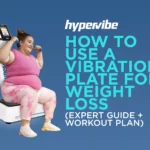
Here’s how we use a vibration plate for weight loss...
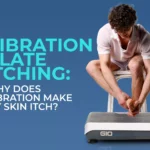
Many people, especially beginners, notice an itchy or tingling “pins-and-needles”...

Taking into consideration the growing popularity of the vibration plate,...

The lymphatic system, also called the lymphoid system, is an...

Most probably you are already familiar with the body vibration...